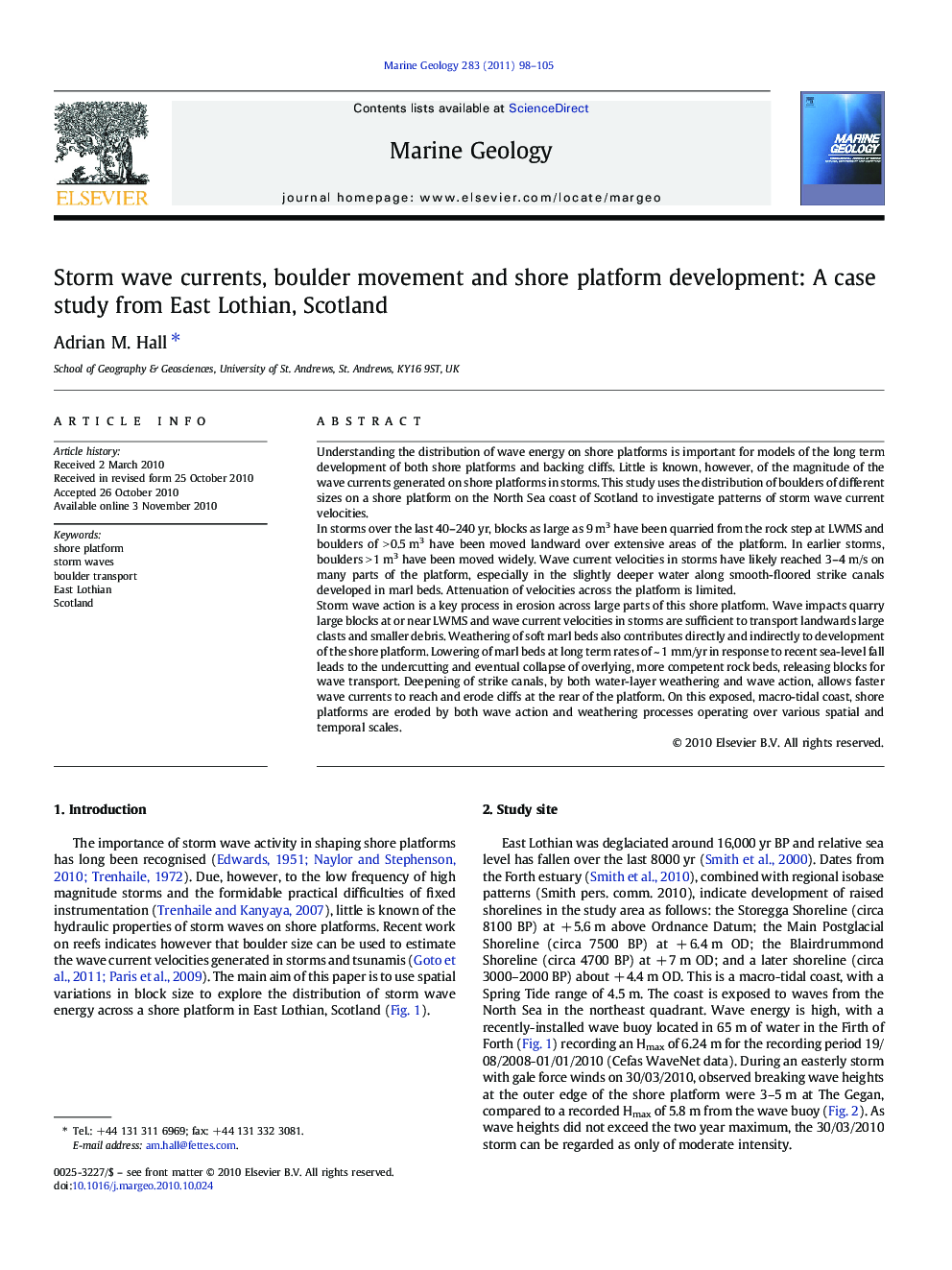| کد مقاله | کد نشریه | سال انتشار | مقاله انگلیسی | نسخه تمام متن |
|---|---|---|---|---|
| 4718730 | 1639137 | 2011 | 8 صفحه PDF | دانلود رایگان |

Understanding the distribution of wave energy on shore platforms is important for models of the long term development of both shore platforms and backing cliffs. Little is known, however, of the magnitude of the wave currents generated on shore platforms in storms. This study uses the distribution of boulders of different sizes on a shore platform on the North Sea coast of Scotland to investigate patterns of storm wave current velocities.In storms over the last 40–240 yr, blocks as large as 9 m3 have been quarried from the rock step at LWMS and boulders of > 0.5 m3 have been moved landward over extensive areas of the platform. In earlier storms, boulders > 1 m3 have been moved widely. Wave current velocities in storms have likely reached 3–4 m/s on many parts of the platform, especially in the slightly deeper water along smooth-floored strike canals developed in marl beds. Attenuation of velocities across the platform is limited.Storm wave action is a key process in erosion across large parts of this shore platform. Wave impacts quarry large blocks at or near LWMS and wave current velocities in storms are sufficient to transport landwards large clasts and smaller debris. Weathering of soft marl beds also contributes directly and indirectly to development of the shore platform. Lowering of marl beds at long term rates of ~ 1 mm/yr in response to recent sea-level fall leads to the undercutting and eventual collapse of overlying, more competent rock beds, releasing blocks for wave transport. Deepening of strike canals, by both water-layer weathering and wave action, allows faster wave currents to reach and erode cliffs at the rear of the platform. On this exposed, macro-tidal coast, shore platforms are eroded by both wave action and weathering processes operating over various spatial and temporal scales.
Journal: Marine Geology - Volume 283, Issues 1–4, 1 May 2011, Pages 98–105